Name George Horton Role Poet | Died 1883 | |
 | ||
Books Naked genius, The Black bard of North Carolina | ||
Poet the remarkable story of george moses horton
George Moses Horton (1798–1884) was an African-American poet and the first African American poet to be published in the Southern United States. His book was published in 1828 while he was still enslaved; he remained enslaved until he was emancipated late in the Civil War.
Contents
- Poet the remarkable story of george moses horton
- Unc black blue tour clip7 george moses horton
- Biography
- Poetry
- Legacy
- Published works
- References

Unc black blue tour clip7 george moses horton
Biography

Horton was born into slavery on William Horton's plantation in Northampton County, North Carolina. He was the sixth of ten children, though the names of his parents are lost to history. As a very young child in 1800, he and several family members were moved to a tobacco farm in rural Chatham County, when his owner relocated. He was given as property to William's relative James Horton in 1814. In 1819, the estate was broken up, and George Moses Horton's family was separated (the poem "Division of an Estate" reflected on the experience years later).
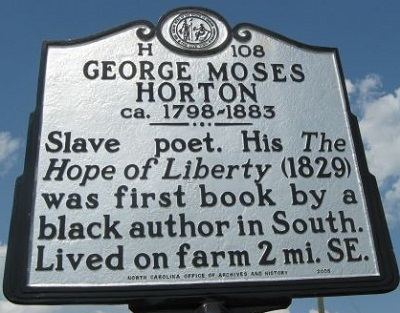
Horton disliked farm work and in his free time he taught himself to read using spelling books, the Bible, and hymnals. Learning poetry and snippets of literature, Horton composed poems in his mind. As a young adult, Horton delivered produce to the University of North Carolina at Chapel Hill, where he composed and recited poems for students, some of whom transcribed his compositions. Horton also composed poems, usually love poems, by commission for the students at 25 or 50 cents each. Considering the difficulty of earning income from poetry, Horton was likely one of the few professional poets in the South at the time.
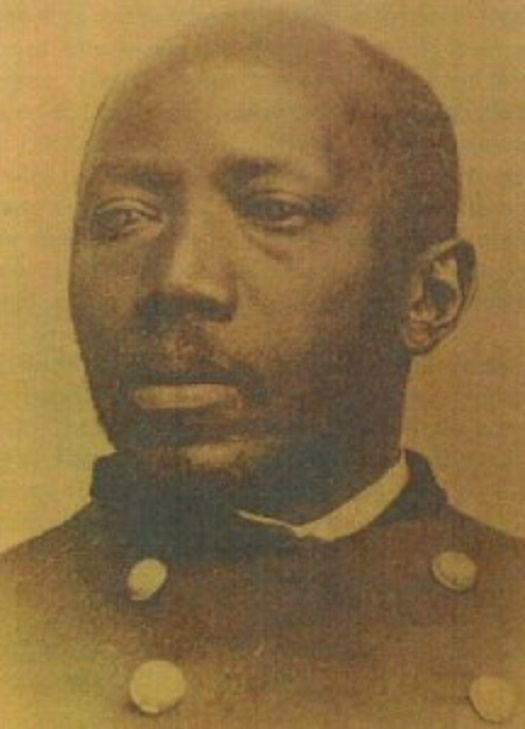
In 1829, his poems were published in a collection titled The Hope of Liberty, which was intended to raise funds for his release from slavery. The book, funded by the politically-liberal journalist Joseph Gales, appeared the same year as David Walker's An Appeal to the Coloured Citizens of the World. Horton is believed to be the first Southern black to publish poetry. Though he knew how to read, he published the book before he learned how to write. As he recalled, "I fell to work in my head, and composed several undigested pieces."
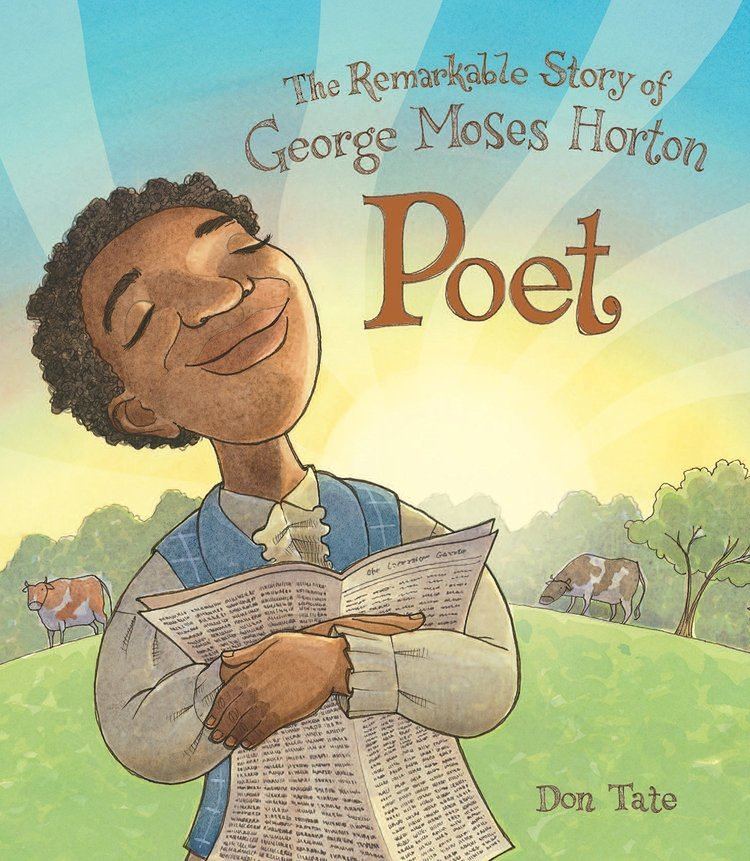
By 1832, he had learned to write for himself, having learned with the aid of Caroline Lee Hentz, who was the wife of a professor and a writer herself. She also assisted in publishing at least two of his poems in a newspaper. Horton had composed a poem on the death of Hentz's child. As he recalled: "She was extremely pleased with the dirge which I wrote on the death of her much lamented primogenial infant, and for which she gave me much credit and a handsome reward. Not being able to write myself, I dictated while she wrote." She sent one of Horton's poems to her hometown newspaper in Lancaster, Massachusetts, where it was published on April 8, 1828, as "Liberty and Slavery".

Horton's first book was republished under the title Poems by a Slave in 1837 and compiled with a biography and poetry by Phillis Wheatley a year later in a book called Memoir and Poems of Phillis Wheatley, a Native African and Slave: Also Poems by a Slave. The book was published by Boston-based publisher and abolitionist Isaac Knapp, and it is believed to be the first complete collection of Wheatley's poems in book form. In 1845, Horton released another book of poetry, The Poetical Works of George M. Horton, The Colored Bard of North-Carolina, To Which Is Prefixed The Life of the Author, Written by Himself. The moniker, "Colored Bard of North-Carolina", was coined by his new publisher.
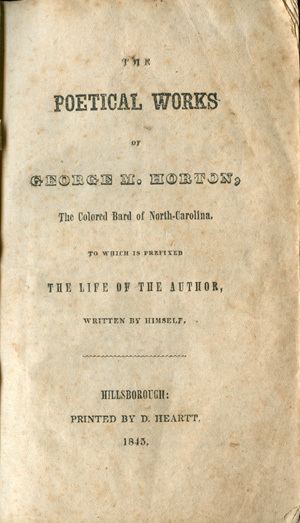
Horton gained the admiration of North Carolina Governor John Owen, influential newspapermen Horace Greeley and William Lloyd Garrison, along with numerous Northern abolitionists.
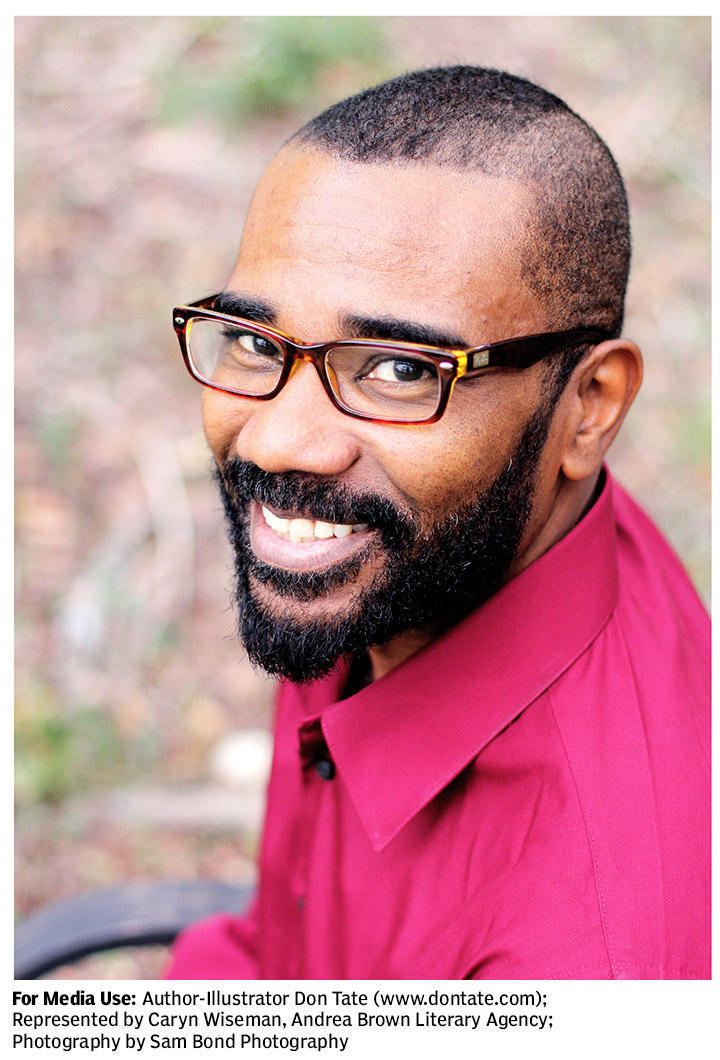
Sometime in the 1830s, Horton married an enslaved woman owned by Franklin Snipes in Chatham County. The couple had two children, Free and Rhody, though little else is known about the family.
Horton had written about his interest in the new nation of Liberia, and a few of the abolitionist papers made calls to raise enough money so that Horton could see his dream of life in Liberia come true. He was not emancipated until 1865, however, when he met the Ninth Cavalry from Michigan. A young officer with that group, William H. S. Banks, collaborated with Horton on the collection Naked Genius the same year. At the age of 68, Horton moved to Pennsylvania as a freeman where he continued to write poetry for local newspapers. One such publication, "Forbidden to Ride on the Street Cars", shows his disappointment in the unjust treatment of blacks even after emancipation. In Philadelphia, he wrote Sunday school stories on behalf of friends who lived in the city. His exact death location and date are unknown. At least one researcher suggests Horton moved to Liberia at some point.
Poetry
After Horton's first poem was published in the Lancaster, Massachusetts Gazette, his works appeared in other newspapers like the Register in Raleigh, North Carolina, and the Freedom's Journal in New York City. Horton's poetic style was typical of contemporary European poetry and was similar to poems written by free white contemporaries, likely a reflection of his reading and his work for commission. He wrote both sonnets and ballads, and his earlier works focused on his life in servitude. Such topics, however, were more generalized and not necessarily based on his personal experience. Nevertheless, he referred to his life on "vile accursed earth" and the "drudg'ry, pain, and toil" of life, as well as his oppression "because my skin is black". His first collection was focused heavily on the issue of slavery and bondage. Likely because sales from that book were not enough for him to purchase his freedom, his second book mentions slavery only twice. The change in theme is also likely due to the more restrictive climate in the South in the years leading up to the Civil War. His later works, especially those made after his emancipation, were more rural and pastoral. Like other early black American writers like Jupiter Hammon and Phillis Wheatley, Horton was also heavily influenced by the Bible.
The earliest known critical commentary on Horton's writing is from 1909 by UNC professor Collier Cobb, who dismissed Horton's antislavery themes: "George never really cared for more liberty than he had, but was fond of playing to the grandstand.".
Legacy
Winston-Salem, North Carolina opened the George Moses Horton Branch Library in 1927 in a YWCA building. The George Moses Horton Society for the Study of African American Poetry was founded in 1996, the same year he was inducted into the North Carolina Literary Hall of Fame. The next year, 1997, he was named Historic Poet Laureate of Chatham County, North Carolina. In 2006, UNC Chapel Hill named a dormitory for George Moses Horton; it was formerly called Hinton James North and is believed to be the first university dormitory in the country to be named for a slave. In 2015 author/illustrator Don Tate published Poet: The Remarkable Story of George Moses Horton, an illustrated biography of Horton for children. The Wilson Library at UNC hosted the national launch of the book on September 3, 2015.
